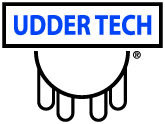The National Animal Health Monitoring System (NAHMS) is preparing for its fourth study in addressing health and management questions as they relate to the cow-calf segment. These national studies on herd health management are conducted regularly in livestock and poultry. Previous cow-calf NAHMS studies were completed in 1997 and 2007-2008. NAHMS feedlot studies were done in 1999 and 2011.
In an effort to develop a survey that collects data relevant to the stakeholders, NAHMS is seeking input from producers in a 10-question web-based survey. You can take the survey here.
David Dargatz, an epidemiologist and DVM with APHIS in Fort Collins, Colorado, called the online issues survey the first of a two-stage effort to conduct the NAHMS survey.
“The current effort is open to anyone to participate in and will be used to help us set the overall objectives of the study,” he said of the 10-question survey. “Once we have the study objectives set based on this input, then we will begin developing the study materials, including the questionnaires that will be administered later.”
The actual NAHMS study will start with a random sample of producers throughout the U.S. in more than 20 major cow-calf states, and it will ask them individually to participate in the study.
“If they agree, then we will administer the questionnaires over the course of two or three visits (usually an hour or less). Those data will then be transferred back to our office for entry and processing to generate the national and regional reports that depict the health and management of the cow-calf segment of the beef industry.”
Because the cow-calf sector is more distributed and more in number than the feeder operations, Dargatz said the 20-plus states covered requires a larger random sample to represent the population.
“Our goal is to represent at least 70 percent of the cow-calf operations and 70 percent of the beef cows in the U.S. with the study.” Those targets help APHIS capture a good representation of the industry without so much cost, he said. In the 2007-2008 study, the producer pool covered 24 states and 87.8 percent of the beef cow inventory, and 79.6 percent of the operations with beef cows.
While the online survey will still yet determine survey objectives, Dargatz said there may be more emphasis on how antibiotics and antimicrobials are used among cow-calf producers.
“Antimicrobial resistance and antimicrobial drug use are certainly topics that many stakeholders are interested in. It is likely that we will continue to see this as an issue that is prioritized for study by many of the stakeholders that we reach out to in order to help us prioritize the issue areas to be addressed by the study.
“Historically we have collected some data on both resistance and drug use in most of the commodities that we have studied. It seems that with increasing interest in the topic and recent policy changes, that there will be a need to further document the status of each of these for the cow-calf sector.”
When a producer is contacted and invited to participate in APHIS interviews, they will fill out two questionnaires – each administered with a personal interview lasting an hour. They are also offered an option to be in some biologic sampling wherein they can learn something about their herd.
In all data collections, the APHIS staff makes extensive efforts to protect producer confidentiality.
“We do not release any of the individual data. All of the reports that are created from the data report summary values for the overall industry or for subgroups of the industry,” Dargatz explained. “Before those reports are generated, they are carefully reviewed to assure that they would not result in disclosure of individual reported data.”
The first data collection will begin in late 2017 and run through the year. Results from that collection should be available in spring 2018. The second data collection begins in spring and should be available in late summer or fall 2018.
The initial survey will remain online through May, with early responses being encouraged for use in developing future questionnaires. To learn more, visit the APHIS website. ![]()

David Cooper
- Managing Editor
- Progressive Cattleman
- Email David Cooper







